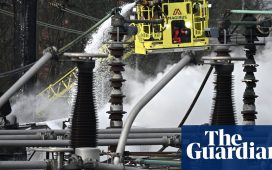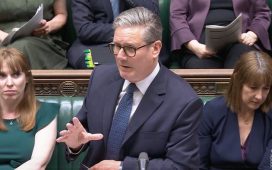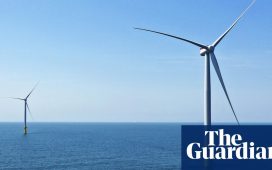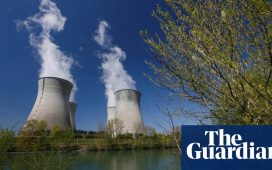The writer is deputy mission director at Nesta
It seems like an odd thing to say in the middle of an energy crisis, but we may be on the cusp of a new era of abundant energy. Not because of nuclear fusion, exciting though recent breakthroughs are, but because of renewable energy.
Over the past week, renewable energy has met more than half of the UK’s demand for electricity, breaking records for wind power in the process. Gas, the dirty and expensive part of the electricity grid, has provided just 14 per cent of electricity. In some parts of Scotland, the grid has regularly been operating with zero carbon emissions.
And there is a lot more to come. On offshore wind alone, the UK is set to double from 14GW of capacity now to 28GW by 2027. The government has a Boris Johnson-era target of 50GW of offshore wind capacity by 2030. For comparison, average UK electricity demand this week has been 33GW.
This explosion in renewables is being driven by the dramatic fall in costs of wind and solar farms. The most recent UK contracts for difference auction priced electricity from offshore wind at £37 per MWh, compared to more than £100 for the Hinkley Point C nuclear plant, while gas-fired electricity has cost several times more than this throughout 2022.
Renewable energy has very low marginal costs and is virtually unlimited by physical constraints. The only real constraint on renewables is how quickly we invest and build.
This is not just good news for fighting climate change. There is now, if we want it, the prospect of abundant, clean, nearly inexhaustible energy. It is possible, by the late 2030s, if the UK has met its goal for a net zero electricity supply, that the debate could move from eliminating carbon to creating abundance.
But there is a catch: renewable energy is only abundant some of the time. Wind power may be breaking records this week, but for large parts of December it was barely contributing to the grid.
Part of the solution to this intermittency lies in storing electricity and helping people to use it more flexibly, matching consumption to availability. There are many promising technologies for storing energy — from batteries to hydrogen — and they will play a key role in getting to net zero.
Another important step is to build more electricity supply than we need. The more electricity we have, the smaller the shortfalls will be during renewables’ low periods, with more available for storage.
But why would investors keep building renewable energy past the point where there was demand for it? The more supply there is, the more electricity prices — and returns to investors — would fall. The answer lies in finding new sources of demand for excess electricity.
How could we use abundant but intermittent energy? One option is to use it to further fight climate change. Direct air carbon capture may have a role to play in stabilising the climate, but is very energy-intensive. Likewise, desalinating water could ease droughts and protect agriculture, but uses lots of energy. If the energy constraint drops some of the time, these become more viable solutions.
Another option may lie in energy-intensive industries that can turn themselves on and off at short notice. Industries that use electrolysis, such as aluminium and green hydrogen, could expand production significantly if energy costs fall.
One of the lessons of economic history is that energy breakthroughs usually lead to periods of rapid economic change. But that change is not easy to predict. In 1954, Lewis Strauss, chair of the US Atomic Energy Commission, foresaw a future where nuclear electricity was “too cheap to meter”. Nuclear has yet to fulfil that promise, but renewables may soon be able to. The key to getting there may not be using less energy, but figuring out how to use more.
Climate Capital

Where climate change meets business, markets and politics. Explore the FT’s coverage here.
Are you curious about the FT’s environmental sustainability commitments? Find out more about our science-based targets here











